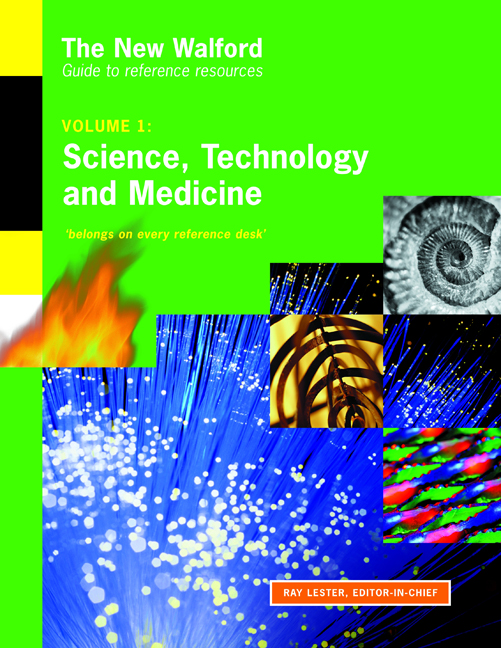Book contents
- Frontmatter
- Dedication
- Contents
- Preface
- Quick-start guide
- Editor and subject specialists
- 50 good websites to try first
- Introduction
- SCIENCE, TECHNOLOGY & MEDICINE: GENERIC RESOURCES
- SCIENCE
- Science
- Mathematics
- Physics & Astronomy
- Earth Sciences
- Chemistry
- Biological Sciences
- Agriculture, Forestry, Fisheries & Food
- MEDICINE
- TECHNOLOGY
- Tools for Information Professionals
- Indexes
- Topic Index
- Title/Author Index
Chemistry
from SCIENCE
Published online by Cambridge University Press: 08 June 2018
- Frontmatter
- Dedication
- Contents
- Preface
- Quick-start guide
- Editor and subject specialists
- 50 good websites to try first
- Introduction
- SCIENCE, TECHNOLOGY & MEDICINE: GENERIC RESOURCES
- SCIENCE
- Science
- Mathematics
- Physics & Astronomy
- Earth Sciences
- Chemistry
- Biological Sciences
- Agriculture, Forestry, Fisheries & Food
- MEDICINE
- TECHNOLOGY
- Tools for Information Professionals
- Indexes
- Topic Index
- Title/Author Index
Summary
Introductions to the subject
The art of chemistry: myths, medicines, and materials
A. Greenberg Wiley-Interscience, 2003, 357pp. $69.95. ISBN 0471071803.
‘Employs 187 figures (including 16 full-color plates) to illuminate 72 essays on the mythical origins, wondrous experiments, and adventurous explorers in the annals of chemistry.’
‘suitable as a gift for either a chemist or a … student … or as a reference book for a chemistry teacher … A useful visual compendium … captures the joy of collecting chemical images.’ (Journal of Chemical Education)
Basics of chemistry
R. Myers Greenwood Press, 2003, 373pp. $75.00. ISBN 0313316643.
Good introduction for those starting out with chemistry, developing principles and concepts from discussions of everyday experiences, historic scientific discoveries, and laboratory experiments,
Series: Basics of the Hard Sciences.
Candid science I: conversations with famous chemists
I. Hargittai Imperial College Press, 2000, 528pp. £21.00. ISBN 1860942288.
35 famous chemists, including 18 Nobel Laureates, talk about their lives in science, their careers, aspirations, hardships, triumphs. Includes Pauling, Hoffman, Kroto, Olah. Candid science II is conversations with famous biomedical scientists. ‘István Hargittai … is brilliant at drawing his subjects out, tactfully asking them the right questions and thus providing us with an insider view of what chemistry in the 20th century has been like … these people are extraordinarily successful chemists, and enthusiasts for it. They make the book delightful to browse. Maybe it will, as it should, produce enthusiasts in its turn; it should be on everyone's bedside table.’ (Chemistry & Industry)
■ Candid science III: more conversations with famous chemists 2003, 520pp. £21.00. ISBN 1860943373.
Chemical explanation: characteristics, development, autonomy
J.E. Earley; New York Academy of Sciences 2003, 370pp. $130.00. ISBN 1573314560.
Papers in this volume address: relations between macroscopic and microscopic description; essential roles of visualization and representation in chemical understanding; and historical questions involving chemical concepts, impacts of chemical ideas on wider cultural concerns.
Series: Annals of the New York Academy of Sciences, V. 988. Based on the sessions of the Sixth Summer Symposium of the International Society for the Philosophy of Chemistry.
Information
- Type
- Chapter
- Information
- The New Walford Guide to Reference ResourcesVolume 1: Science, Technology and Medicine, pp. 201 - 228Publisher: FacetPrint publication year: 2004
